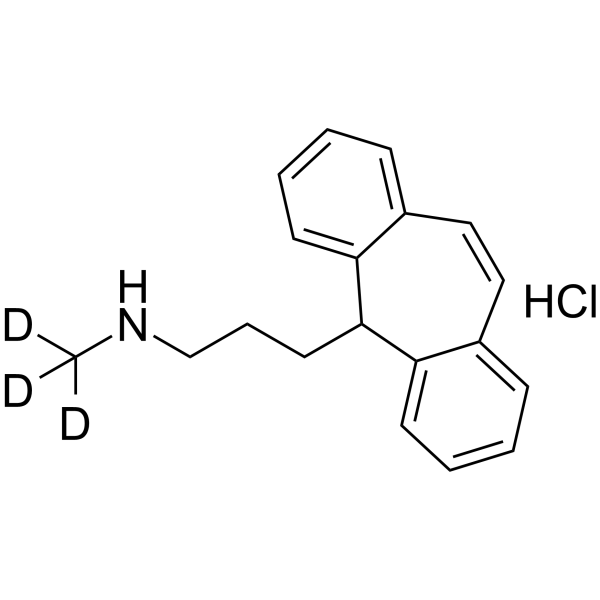Protriptyline (N-methyl-d3) (hydrochloride)
Modify Date: 2025-09-10 12:28:32

Protriptyline (N-methyl-d3) (hydrochloride) structure
|
Common Name | Protriptyline (N-methyl-d3) (hydrochloride) | ||
|---|---|---|---|---|
| CAS Number | 1435934-21-6 | Molecular Weight | 266.40 | |
| Density | N/A | Boiling Point | N/A | |
| Molecular Formula | C19H19D3ClN | Melting Point | N/A | |
| MSDS | N/A | Flash Point | N/A | |
Use of Protriptyline (N-methyl-d3) (hydrochloride)Protriptyline (N-Methyl-d3) hydrochloride is the deuterium labeled Protriptyline hydrochloride. Protriptyline hydrochloride is a tricyclic antidepressant (TCA), specifically a secondary amine, for the treatment of depression and ADHD. Unique among the TCAs, protriptyline tends to be energizing instead of sedating, used for narcolepsy to achieve a wakefulness-promoting effect[1]. |
| Name | Protriptyline (N-methyl-d3) (hydrochloride) |
|---|
| Description | Protriptyline (N-Methyl-d3) hydrochloride is the deuterium labeled Protriptyline hydrochloride. Protriptyline hydrochloride is a tricyclic antidepressant (TCA), specifically a secondary amine, for the treatment of depression and ADHD. Unique among the TCAs, protriptyline tends to be energizing instead of sedating, used for narcolepsy to achieve a wakefulness-promoting effect[1]. |
|---|---|
| Related Catalog | |
| In Vitro | Stable heavy isotopes of hydrogen, carbon, and other elements have been incorporated into drug molecules, largely as tracers for quantitation during the drug development process. Deuteration has gained attention because of its potential to affect the pharmacokinetic and metabolic profiles of drugs[1]. |
| References |
[1]. Hudgel DW. Pharmacologic treatment of obstructive sleep apnea. J Lab Clin Med. 1995;126(1):13-18. |
| Molecular Formula | C19H19D3ClN |
|---|---|
| Molecular Weight | 266.40 |